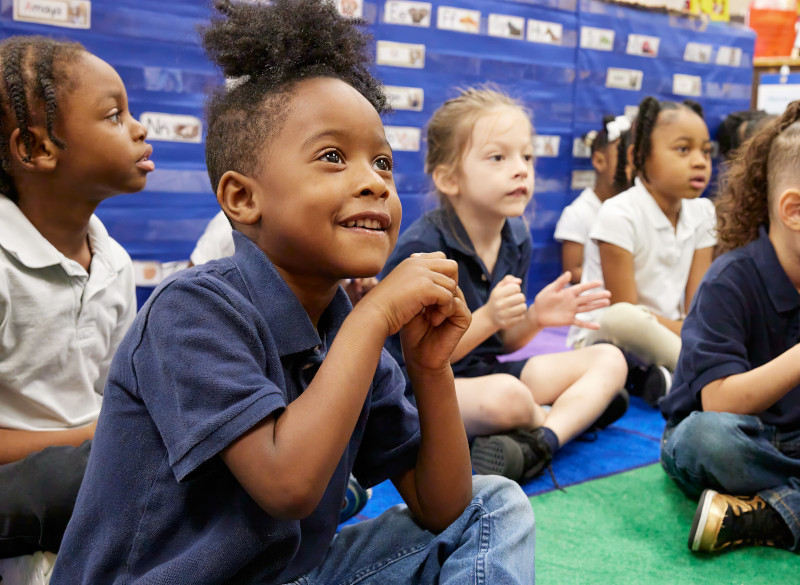How to Choose the Best Pre-K Curriculum: Seven Important Considerations in 2024

What makes children successful in a pre-K program?
Two factors at the top of the list are teachers and curriculum. While nothing can guarantee school success, quality teachers and implementing a high-quality curriculum with fidelity make success exponentially more likely for each child in your care.
We’ve talked before in blog posts and webinars (here and here and here) about hiring and retaining excellent teachers, both the why and the how.
Let’s now turn our attention to how to select the best curriculum for your prekindergarten and preschool classrooms. Here are some points you will want to consider if you are charged with making this important decision.
Seven Considerations for Selecting the Best Pre-K Curriculum
1. Determine what you know and what you want to find out.
Begin your research into available options by asking yourself what you already know and what you want to learn about. You may want to begin with very nuts-and-bolts items required by your state or locality. For example, you may already know that your curriculum needs to be research-based and aligned with state standards, so add this item to your list of what you want to find out: “Is this curriculum research-based and aligned to our state standards?”
2. Identify your strengths, needs, and interests.
Conducting your initial research can seem overwhelming. Before weighing the pros and cons of any pre-K curriculum, you can narrow your options by first identifying the strengths, needs, and interests of your own school community. Ask yourself, “What matters most to us? What are we trying to achieve? What can help us get there?”
3. Engage with authentic materials.
Most reputable pre-K curriculum providers are happy to provide information about their philosophy and how that philosophy is incorporated into their curriculum, as well as free samples of their materials. Never fear getting to know the local sales representatives of the curriculum companies you are interested in. A positive relationship with a knowledgeable sales rep sets the tone for your long-term interactions with the organization.
4. Continue to let questions guide your discovery.
Throughout the process, continue to add to your lists of what you know and what you want to find out. For example, if you understand the value of positive relationships (“We know we value building positive relationships.”), you can turn your belief statement into a question that you want your research to answer: “What emphasis does this curriculum place on positive teacher–child interactions? How does it help teachers build positive relationships with children’s families and involve them in the life and work of the classroom?”
Consider these other important questions you may want to investigate.
-
- What guidance does the curriculum offer for including and involving all families?
- How easy/difficult is it to individualize learning experiences?
How does it address the needs of the whole child, while also promoting content learning? - What guidance does it offer for helping all children and families feel welcomed, valued, and included?
- How does it suggest you celebrate learning?
- What guidance does it provide for addressing challenging behaviors?
- How does it invest in developing the long-term capabilities of teachers and children, such as innovation, perseverance, and creativity, as opposed to placing a premium on rote memorization and recitation?
5. Provide various opportunities for engagement.
If you want to know what various groups of people think of the available options, ask them. Offer lots of ways for people to respond—from large-group gatherings to individual surveys and one-on-one conversations. And remember, people often respond better to specific, personal invitations than to general ones.
6. Consider ways to intentionally scaffold each person’s learning.
A high-quality curriculum will be supported by a variety of opportunities for teachers, coaches, and leaders to engage in meaningful, intentional professional learning. It offers a variety of ways for families to be engaged in their children’s life at school and to reinforce and extend their children’s school experiences at home, even if their own experiences as students weren’t positive ones. Before investing in a curriculum, consider the long-term supports available that will help you scaffold learning over time—both for children and for adults.
7. Prioritize authentic assessment.
A high-quality pre-K curriculum doesn’t just look good on paper. It doesn’t matter how it labels itself—such as “teacher-friendly” or “cutting-edge”—if these labels are mere self-promotion. The true test of “Which curriculum is best?” happens once you begin opening the boxes, engaging with its resources, and implementing it with children. So, once you have narrowed your choices to a final two or three companies, ask each of them if they can share any “success stories” from current customers. Look for meaningful signs of long-term value, such as the level of engagement from children and their families; impact on children’s behavior; growth and learning across all developmental domains; and whether teachers, children, and families are enjoying the school experience.
Determining Quality
If you are at all familiar with The Creative Curriculum, you may already have realized that these recommendations for learning about and selecting a high-quality curriculum for your pre-K program are the same that guide our long-term, project-based studies for children in preschool. That’s because quality learning is quality learning, regardless of the age of the learner.
This brings us to one last important point: a high-quality pre-K curriculum respects learners. It doesn’t talk down to them, but rather it stimulates thinking and challenges learners of all ages to think and grow. It doesn’t ignore individual differences, but instead honors them. It doesn’t neglect the fact that children are active, eager learners, primed from birth to develop and learn in every way they can.